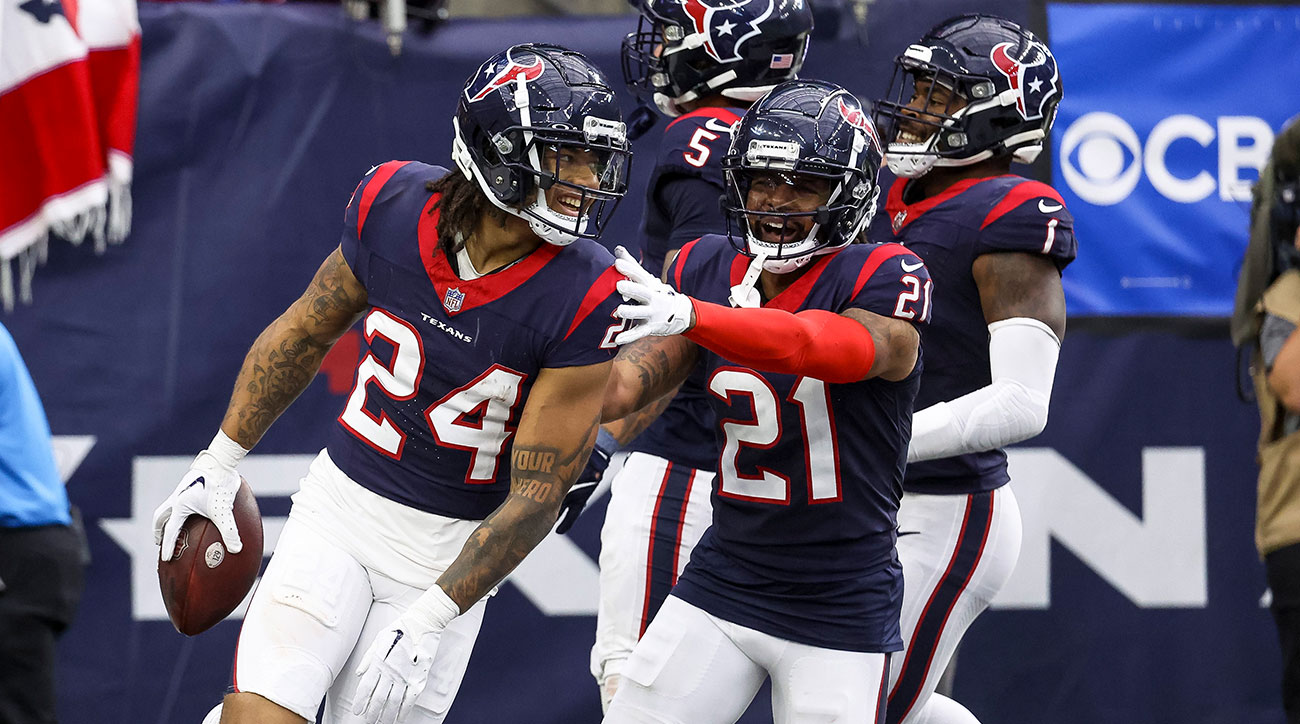The Texans Have Young Cornerstones on Defense Just Like on Offense

How about a Texans column that only mentions C.J. Stroud twice?
Stop the tape at the 9:35 mark of the fourth quarter, with Houston up by five points, coddling a dwindling lead and Russell Wilson dropping back to try to hit on a moon ball to Courtland Sutton in the seam with some open space. There’s Derek Stingley Jr., making up for the advantage in leverage Sutton clearly has, cutting across the receiver and going airborne. The still frame makes the second-year defensive back look like some combination of a prima ballerina and trampoline instructor. He is soaring. He is also tracking a ball backward that he may have slightly misjudged. No matter. This is simply what Stingley does now, for the fourth time in three games, he has broken a quarterback’s heart. This time, it was not a tipped ball, it was pure feel.
WOW 🤯🤯🤯 pic.twitter.com/I19nE2JEKM
— Houston Texans (@HoustonTexans) December 3, 2023
O.K. Stop it again at the 4:35 mark. The Broncos have one more crack at a go-ahead touchdown, and it’s first-and-10 inside the Denver 20. There’s Will Anderson Jr. coming off the edge, closing in on Wilson’s right arm. He doesn’t get there, but along for the ride are a pair of Broncos defenders. It’s a double team. Another one. Anderson has drawn two blockers on more than 20% of his snaps this year, more than Brian Burns and just slightly under the percentage at which Maxx Crosby and Nick Bosa face extra blockers. A few plays later on that same drive, he finds a seam into the backfield via a stunt, collapses the pocket and forces Wilson to scramble. On the next play, a fourth-and-1, Anderson busts through mass protection and grabs the running back at his ankles in the backfield, nearly ending the game right there. Two plays after that, he chases Wilson out of the pocket and forces a throwaway. Then he collapses the pocket again, forcing Wilson to dive for a first down. It’s not long now before Wilson, with nine seconds remaining in the game, will throw yet another pick to put this out of contention.

Obviously, the revival of the Texans is a more complicated story than that of someone throwing passes, even if that person happens to be wildly cool and efficient for his age. As we’ve mentioned before, the organization, with its time in the relevance desert, has uncovered valuable players in the middle rounds of the draft. It has also supplemented wisely, drawing veterans such as Jimmie Ward, who picked off Wilson’s final pass, largely thanks to the cachet provided by DeMeco Ryans upon his arrival.
But Sunday is another example of Houston also developing—rapidly in both cases—its defensive cornerstone players. Without an elite shutdown cornerback and a closer as a pass rusher, most teams not playing in the wayward NFC South cannot dream of legitimate playoff contention or long-term success.
This was less evident earlier in the season. Stingley was not as healthy, or as surrounded by talented players as the Jets’ Sauce Gardner. Anderson sure felt a bit undersized and able to be swallowed up by a more traits-heavy pass-rusher class, but his ascent has been somewhat immediate. The earliest double team data we could get our hands on this season showed teams being as afraid of Anderson, or at least devoting as many resources to block him, as they did Myles Garrett or Micah Parsons. Anderson, with less help than most of the players ahead of him, has the fifth-best pass-rush win rate in the NFL.
Sunday’s game against the Broncos was a nice time to digest this on a grander scale. The win stopped a Denver team that had won five straight. Wilson had come in playing his best football of the past two seasons. Whether that was due to Sean Payton’s “fixing” him, or Wilson’s finally escaping the pocket and picking up first downs with his legs again (as well as being able to athletically extend plays like he did during his younger days in Seattle), I’ll leave that up to the film gobblers to decide. Anderson sacked Wilson twice, hit him four times, knocked down a pass and had a pair of tackles for a loss. Stingley had four of the Texans’ seven pass breakups.
This is the type of win that doesn’t occur without them. We have a habit in the NFL of dividing quarterbacks into players you can win with and players you can win because of. Stingley, for certain, has crossed that barrier as a defensive player, even through another truncated season cut short by injury. Anderson may have been there since Day 1. Stingley was tested, and it would not surprise me to see him picked on less frequently as the year goes on. He could very well finish the season with an opposing quarterback completion percentage under 60.
The consequences, then, are significant. There are going to be days when Stroud, amid this ascent, will still vacillate between a win-with QB and a win-because-of QB. Now we have a greater idea of how firm the defensive backstop is behind him. A group of players worth mentioning just as much, if not more, than the quarterback himself.
